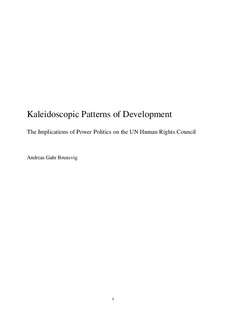Kaleidoscopic patterns of development : the implications of power politics on the UN Human Rights Council
Master thesis
Permanent lenke
http://hdl.handle.net/11250/2455312Utgivelsesdato
2017Metadata
Vis full innførselSamlinger
Sammendrag
This thesis is a study of the development of the debate in the United Nations Human Rights Council, from its establishment in 2006 until the end of 2016. The aim of this study is, first, to detect the development of the debate, and second, to explain what drives this development. This is conducted on the basis of a twofold research question: (1) What is the development of the debate in the UN Human Rights Council, and (2) why has the conflict among states increased? Both the statistical findings and the qualitative data gathered through interviews with key actors in the Human Rights Council – diplomats, civil society representatives, and UN staff – indicate that the debate has become more conflictual, especially since 2013. I argue that the Human Rights Council's development is driven by the UN member-states power-political interests, in particular by the interests of powerful groups and alliances, as well as the major states. These interests are, in turn, shaped by events taking place outside the Human Rights Council, such as government changes and geopolitical events. Thus, the development in the Human Rights Council reflects the development in international politics – it is a microcosmos. When the international system is shaken – the patterns within the UN Human Rights Council change.
